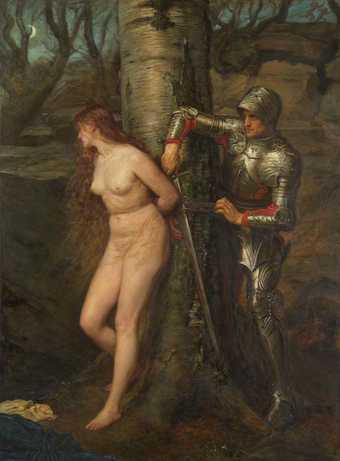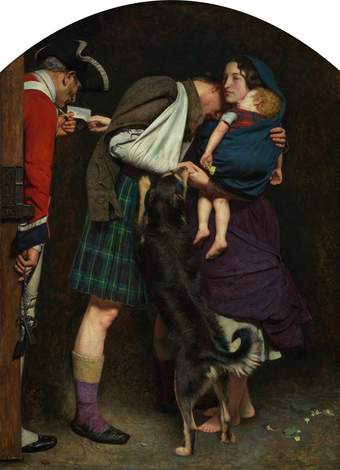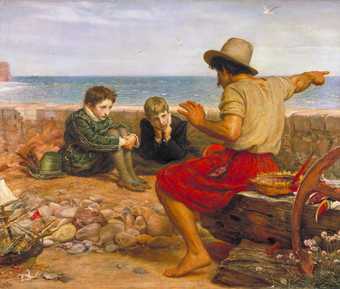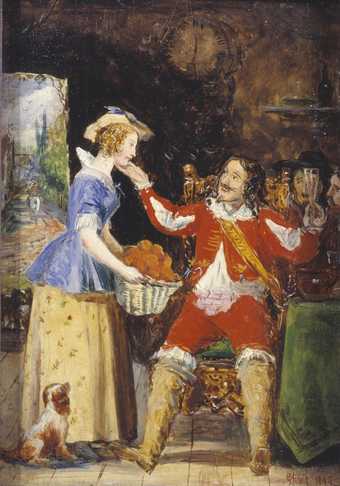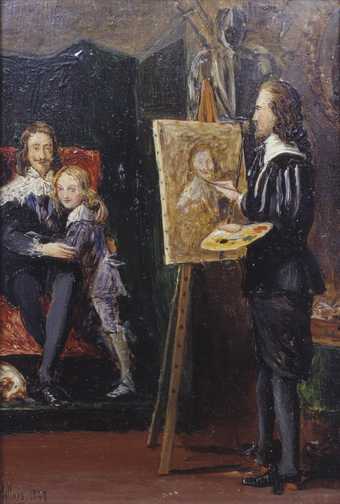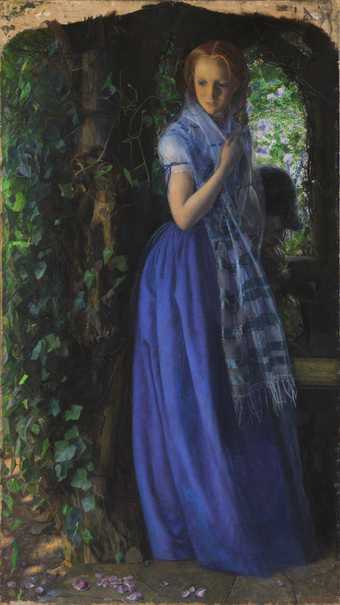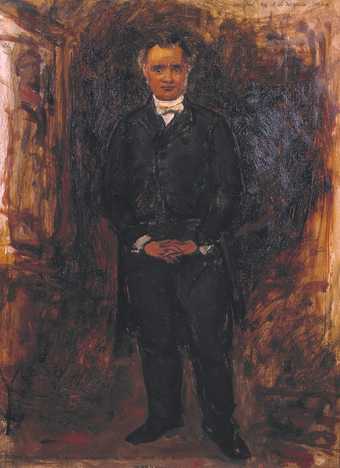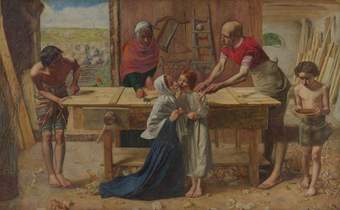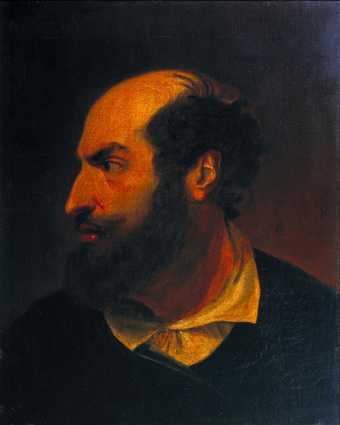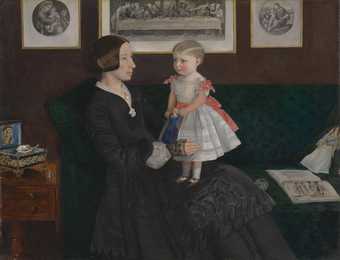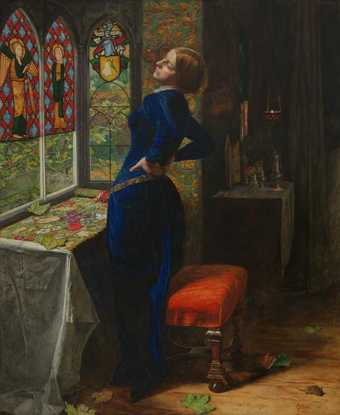
In Tate Britain
- Artist
- Sir John Everett Millais, Bt 1829–1896
- Medium
- Oil paint on canvas
- Dimensions
- Support: 762 × 1118 mm
frame: 1105 × 1458 × 145 mm - Collection
- Tate
- Acquisition
- Presented by Sir Henry Tate 1894
- Reference
- N01506
Summary
The scene depicted is from Shakespeare's Hamlet, Act IV, Scene vii, in which Ophelia, driven out of her mind when her father is murdered by her lover Hamlet, falls into a stream and drowns:
There, on the pendent boughs her coronet weeds
Clambering to hang, an envious sliver broke;
When down her weedy trophies and herself
Fell in the weeping brook. Her clothes spread wide,
And, mermaid-like, awhile they bore her up;
Which time she chanted snatches of old tunes,
As one incapable of her own distress,
Or like a creature native and indued
Unto that element; but long it could not be
Till that her garments, heavy with their drink,
Pull'd the poor wretch from her melodious lay
To muddy death.
Shakespeare was a favourite source for Victorian painters, and the tragic-romantic figure of Ophelia from Hamlet was an especially popular subject, featuring regularly in Royal Academy exhibitions. Arthur Hughes exhibited his version of her death scene in the same year as this picture was shown (Manchester City Art Gallery).
Millais began the background in July 1851, at Ewell, Surrey. In accordance with the aims of the Pre-Raphaelite Brotherhood, he painted with close observation of nature. Millais quickly found, however, that such intense study was not without problems, and was moved to remark in a letter to Mrs Thomas Combe,
My martyrdom is more trying than any I have hitherto experienced. The flies of Surrey are more muscular, and have a still greater propensity for probing human flesh ... I am threatened with a notice to appear before a magistrate for trespassing in a field and destroying the hay ... am also in danger of being blown by the wind into the water, and becoming intimate with the feelings of Ophelia when that Lady sank to muddy death, together with the (less likely) total disappearance, through the voracity of the flies ... Certainly the painting of a picture under such circumstances would be a greater punishment to a murderer than hanging.
(J.G. Millais I, pp.119–20)
The figure of Ophelia was added afterwards. The model, Elizabeth Siddal, a favourite of the Pre-Raphaelites who later married Rossetti, was required to pose over a four month period in a bath full of water kept warm by lamps underneath. The lamps went out on one occasion, causing her to catch a severe cold. Her father threatened the artist with legal action until he agreed to pay the doctor's bills.
The plants, most of which have symbolic significance, were depicted with painstaking botanical detail. The roses near Ophelia's cheek and dress, and the field rose on the bank, may allude to her brother Laertes calling her 'rose of May'. The willow, nettle and daisy are associated with forsaken love, pain, and innocence. Pansies refer to love in vain. Violets, which Ophelia wears in a chain around her neck, stand for faithfulness, chastity or death of the young, any of which meanings could apply here. The poppy signifies death. Forget-me-nots float in the water. Millais wrote to Thomas Combe in March 1852: ‘Today I have purchased a really splendid lady's ancient dress - all flowered over in silver embroidery - and I am going to paint it for “Ophelia”. You may imagine it is something rather good when I tell you it cost me, old and dirty as it is, four pounds’ (J.G. Millais I, p.162).
Ophelia was part of the original Henry Tate gift to the Tate Gallery.
Further reading
John Guille Millais, The Life and Letters of Sir John Everett Millais, 1899, I, pp.116–20, 123, 129–131, 144–7, 151, 162–3.
Leslie Parris (ed.), The Pre-Raphaelites, exhibition catalogue, Tate Gallery, London 1984, reprinted 1994, pp.96–8, reproduced in colour.
Terry Riggs
February 1998
Does this text contain inaccurate information or language that you feel we should improve or change? We would like to hear from you.
Display caption
This work shows the death of Ophelia, a scene from Shakespeare’s play Hamlet. Traumatised when Hamlet breaks off their betrothal and accidentally kills her father, she allows herself to fall into a stream and drown. The flowers she has been collecting symbolise her story, the poppies representing death. Millais painted the lonely setting leaf-by-leaf over many months by the Hogsmill River, Surrey. Afterwards, the artist, poet and model Elizabeth Siddall posed in a wedding dress in a bath of water at Millais's studio. Through the painting, Millais critiqued the Victorian practice of occasionally arranging marriages for money and status.
Gallery label, March 2022
Does this text contain inaccurate information or language that you feel we should improve or change? We would like to hear from you.
Film and audio
Features
Explore
- emotions, concepts and ideas(16,416)
-
- emotions and human qualities(5,345)
-
- despair(209)
- music and entertainment(2,331)
-
- singing(77)
- picking flowers(28)
- characters(438)
-
- Ophelia(10)
- ‘Hamlet’(15)
- clothing and personal items(5,879)
-
- dress(381)
- actions: postures and motions(9,111)
-
- floating(36)
- hand / hands raised(143)
- woman(9,110)
- drowned(55)
- mental illness(261)
- individuals: female(1,698)
- UK cities, towns and villages(12,725)
-
- Ewell(3)
- Surrey(333)
- England(19,202)
- England, South East(5,940)
- England, Southern(8,982)
- birth to death(1,472)
-
- death(685)
- abstract concepts(119)
- royalty and social rank(345)
-
- courtier(69)
You might like
-
Dante Gabriel Rossetti Beata Beatrix
c.1864–70 -
Sir John Everett Millais, Bt The Vale of Rest
1858–9 -
Sir John Everett Millais, Bt The Knight Errant
1870 -
Sir John Everett Millais, Bt The Order of Release 1746
1852–3 -
Sir John Everett Millais, Bt The Boyhood of Raleigh
1870 -
Sir John Everett Millais, Bt A Maid Offering a Basket of Fruit to a Cavalier
1849 -
Sir John Everett Millais, Bt Charles I and his Son in the Studio of Van Dyck
1849 -
Arthur Hughes April Love
1855–6 -
Sir John Everett Millais, Bt Serjeant Ralph Thomas
1848 -
Sir John Everett Millais, Bt Christ in the House of His Parents (‘The Carpenter’s Shop’)
1849–50 -
Sir John Everett Millais, Bt Hearts are Trumps
1872 -
Sir John Everett Millais, Bt A Spanish Gentleman (after John Jackson’s ‘Shylock’)
c.1843 -
Sir John Everett Millais, Bt Mrs James Wyatt Jr and her Daughter Sarah
c.1850 -
Sir John Everett Millais, Bt The Artist Attending the Mourning of a Young Girl
c.1847 -
Sir John Everett Millais, Bt Mariana
1851



